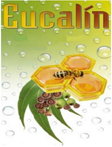Once again addressing the application of Alice, the US Court of Appeals for the Federal Circuit partially reversed a district court’s dismissal of several patents as subject matter ineligible for error in analyzing their claims together because of a shared specification despite different claim features. Weisner v. Google LLC, Case No. 021-2228 (Fed. Cir. Oct. 13, 2022) (Reyna, Hughes, Stoll, JJ.) (Hughes, J., dissenting in part)
Sholem Weisner sued Google for infringement of four related patents describing ways to “digitally record a person’s physical activities” and use the digital record. The patents’ common specification described how individuals and businesses can sign up for a system to exchange information (e.g., “a URL or an electronic business card”), and as they encounter people or businesses that they want recorded in their “leg history,” the URLs or business cards are recorded along with the time and place of the encounters. Google moved to dismiss the suit under Fed. R. Civ. P. 12(b)(6), arguing that the patent claims were directed to ineligible subject matter under 35 U.S.C. § 101, and that Weisner had failed to meet the minimum threshold for plausibly pleading his claim of patent infringement under the Twombly and Iqbal standards (Twiqbal). The district court agreed and granted dismissal under Twiqbal. After holding a hearing on patent ineligibility, the district court also granted dismissal under § 101 but granted Weisner leave to amend his complaint. In his amended complaint, Weisner added infringement allegations, allegations related to patent eligibility and an “Invention Background and System Details Explained” section. Google again moved to dismiss the amended complaint based on both § 101 and Twiqbal, which the district court granted. Weisner timely appealed.
The Federal Circuit applied the Alice two-step analysis to determine whether the claims at issue were directed to a patent-ineligible concept, such as an abstract idea, and if they were, whether the elements of each claim, both individually and as an ordered combination, transformed the nature of the claim into a patent-eligible application. As discussed in the Supreme Court cases Alice and Mayo, the second step is “a search for an ‘inventive concept’—i.e., an element or combination of elements that is ‘sufficient to ensure that the patent in practice amounts to significantly more than a patent upon the [ineligible concept] itself.’”
There were four asserted patents in issue. For the first two patents, Weisner attempted to argue that the claims improved “the functioning of the computer itself” or “an existing technology process” by “[1] automatically recording physical interactions and [2] limiting what is recorded to only specific types of interactions that are pre-approved and agreed to by an individual member and a vendor member.” However, the Federal Circuit was unconvinced that this was the type of improvement found in Enfish to bring claims into the realm of inventiveness. Instead, the Court agreed with the district court that, consistent with past precedent, this was no different than travel logs, diaries, journals or calendars used to keep records of a person’s location, and that [...]
Continue Reading
read more

 Subscribe
Subscribe



